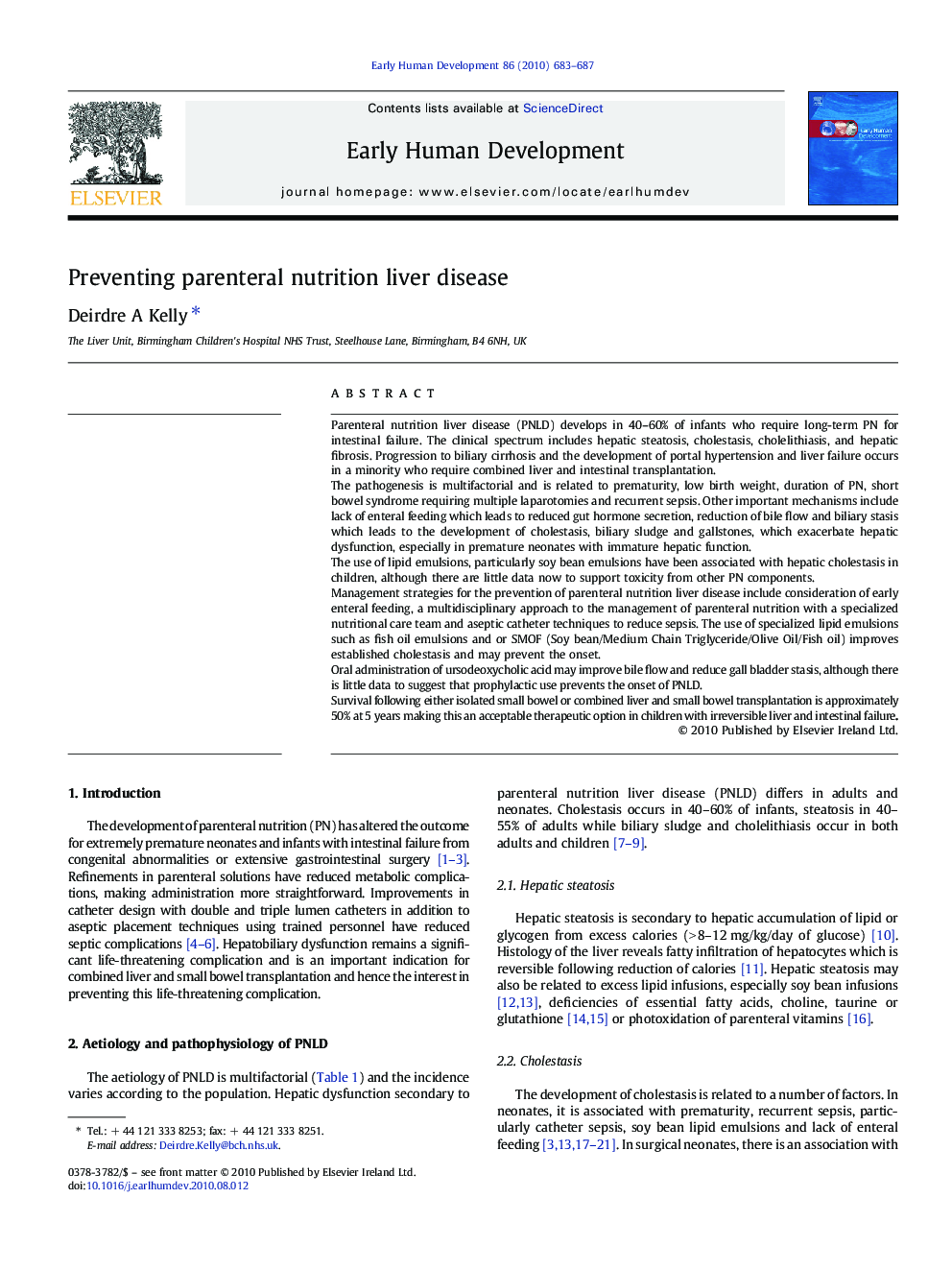| Article ID | Journal | Published Year | Pages | File Type |
|---|---|---|---|---|
| 3917409 | Early Human Development | 2010 | 5 Pages |
Parenteral nutrition liver disease (PNLD) develops in 40–60% of infants who require long-term PN for intestinal failure. The clinical spectrum includes hepatic steatosis, cholestasis, cholelithiasis, and hepatic fibrosis. Progression to biliary cirrhosis and the development of portal hypertension and liver failure occurs in a minority who require combined liver and intestinal transplantation.The pathogenesis is multifactorial and is related to prematurity, low birth weight, duration of PN, short bowel syndrome requiring multiple laparotomies and recurrent sepsis. Other important mechanisms include lack of enteral feeding which leads to reduced gut hormone secretion, reduction of bile flow and biliary stasis which leads to the development of cholestasis, biliary sludge and gallstones, which exacerbate hepatic dysfunction, especially in premature neonates with immature hepatic function.The use of lipid emulsions, particularly soy bean emulsions have been associated with hepatic cholestasis in children, although there are little data now to support toxicity from other PN components.Management strategies for the prevention of parenteral nutrition liver disease include consideration of early enteral feeding, a multidisciplinary approach to the management of parenteral nutrition with a specialized nutritional care team and aseptic catheter techniques to reduce sepsis. The use of specialized lipid emulsions such as fish oil emulsions and or SMOF (Soy bean/Medium Chain Triglyceride/Olive Oil/Fish oil) improves established cholestasis and may prevent the onset.Oral administration of ursodeoxycholic acid may improve bile flow and reduce gall bladder stasis, although there is little data to suggest that prophylactic use prevents the onset of PNLD.Survival following either isolated small bowel or combined liver and small bowel transplantation is approximately 50% at 5 years making this an acceptable therapeutic option in children with irreversible liver and intestinal failure.
